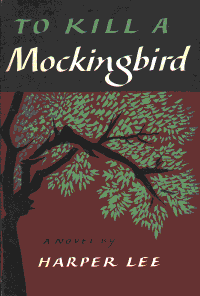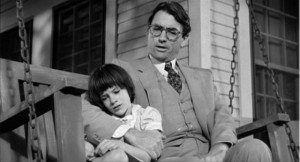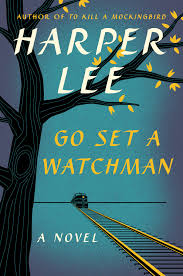In Harper Lee’s novel Go Set a Watchman there are fewer clear-cut values regarding politics and racial issues than in the subsequent book, To Kill a Mockingbird, at least from the viewpoints of Atticus Finch and his brother Jack. Written in the early 1950’s, To Set a Watchman is a more naked, pre-Civil Rights look at the South, Alabama in particular of that period. To Kill a Mockingbird, though written later, has as its setting Alabama of the early 1930’s when Jean Louise was still a child and civil rights for Negroes (later called Blacks by their choice) seem not even to have been an issue in Alabama (and other places in the South) perhaps because Negroes of that era were so beaten down that rights for them were assumed by many or most to be unattainable.
Jean Louise Finch (Scout) in To Set a Watchman is in her early twenties, having lived for a while in New York City and with a racially color-blind view that she has managed to keep from her childhood, a view she got from her father, Atticus. The clash between her liberal views and the surprisingly more racist views of her relatives provides the principal conflict of the book, which is a story about loss of innocence and the confrontation with the painful reality that parents, who we think are perfect, actually have flaws and weaknesses that can be irreconcilable with our own ideals, even if those ideals are viewed as unrealistic and simplistic by the very parents who taught them to us in the first place.
Atticus in this earlier book is not the model of wisdom and perfection he is in To Kill a Mockingbird. He tries to justify and sugarcoat his denigration of Negroes with a supposedly wider view of what Southern whites have lost through cultural shock, including scapegoats like the NAACP. This rather harsh view, which Atticus prefers to think is “reality” shatters Jean Louise’s childhood view of her father as a paragon of virtue and fairness. Superman is revealed as only a myth, a myth with powerful flaws, and Jean Louise is forced to consider finding some level of reality through a middle ground, rather than to be completely separated altogether from Atticus, who in this earlier book is a much more calculating, pragmatic, unsentimental man than the Atticus of To Kill a Mockingbird, and more a figure of his time and environment than the beloved icon he was to the younger Scout. This is probably a familiar dilemma to most of us, who as children didn’t see the flaws in our fathers that we saw when we became prouder and more self-righteous as young adults. I think we need to read both books to see the real Atticus Finch…a childhood view and one from that of the young adult struggling with the harsh realities of the world outside the home town.
Readers may find less clarity of purpose in Watchman and views that are less, dare I use the phrase, “black and white.” We are left to make our own peace with the values and history we have observed and experienced in our country since the more than half a century since these two books were written. JB




